Masks & the Mask Dance
This is the fifth part in our series, “Masks & the Mask Dance” published in partnership with the National Research Institute of Cultural Heritage
The Haeseo Mask Dance: the mask dances from Hwanghae Province
- the Bongsan Mask Dance – the Gangnyeong Mask Dance – the Eunyul Mask Dance
The Haeseo Mask Dances have been transmitted around Hwanghae Province, currently governed by North Korea. They thrived in the Bongsan, Gangnyeong and Eunyul regions. Among the three Haeseo-style variants, the Bongsan mask dance enjoyed the widest popularity for its well-structured plot and elevated dialog.
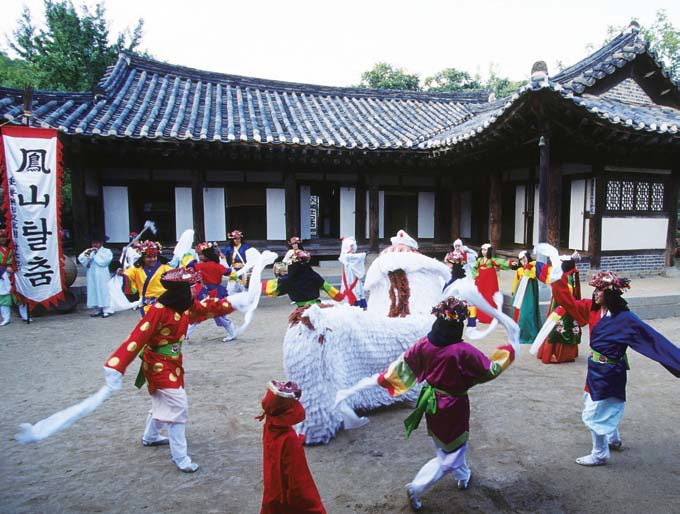
Dancers prepare for their Bongsan Mask Dance performance.
The mask dance from Bongsan was performed at nearly every five-day market held across the region, and was annually staged on a grand scale to celebrate Dano, one of the major traditional holidays falling on the fifth day of the fifth lunar month. According to historical records, this mask dance could draw up to 20,000 people in its heyday. Most mask dance performers were low-ranking local government employees. The costumes were more colorful compared with those in other mask dances, and verses from Chinese poetry were frequently quoted in the dialog. In addition, musicians belonging to the government office provided well-organized background music.
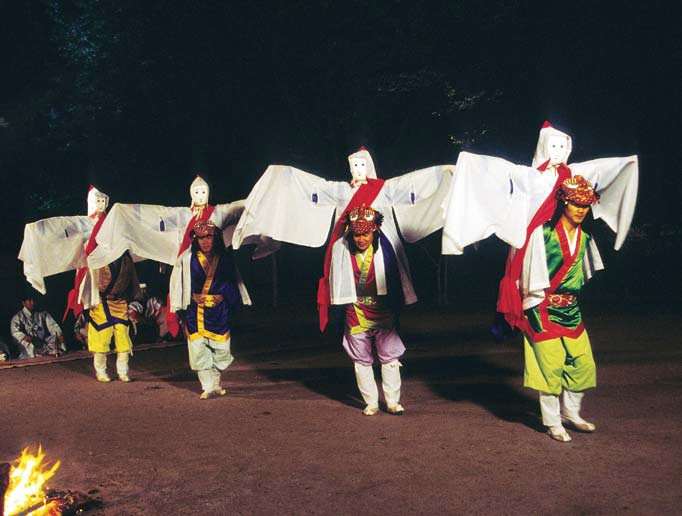
Four young monks perform the mask dance from Bongsan.
One interesting traditional story about the Bongsan mask dance goes as follows:
At the end of Goryeo times, there lived an old Buddhist monk named Manseok. He was widely respected for his deep devotion to Buddhism.
Among his acquaintances was a mean and ill-behaved man named Chwibari. He was always thinking about how to make a fool of Manseok in front of the local people.
One day, Chwibari came up with the idea of causing the monk trouble and asked a charming young woman to seduce him. Manseok devoted most of his time to studying Buddhist scripture, but ten year’s study went up in smoke when the flirtatious young woman approached him. In the end, Manseok became the laughing stock of the village.
Afterward, a man heard the tale of Manseok and created the Bongsan mask dance based on this story. It is said that the man created the mask dance because he could no longer stand the degraded state of Buddhism and the lack of public morals.
At first, the Bongsan mask dance was performed as part of the rituals held on Buddha’s birthday, the eighth day of the forth lunar month. However, as it slowly began to lose its religious qualities and increasingly served as a form of popular entertainment, it became one of the main folk performances in celebration of Dano.
The Bongsan mask dance consists of seven scenes and most of them, including the first episode where four young monks perform a ritual dance, are closely related to Buddhism.
Meanwhile, the Eunyul mask dance consists of six scenes; the first begins with a dance by a white lion. Unlike the Bongsan dance, it was performed mainly by farmers and other members of less-educated classes and its lines are based on everyday language rather than verses from Chinese poetry.
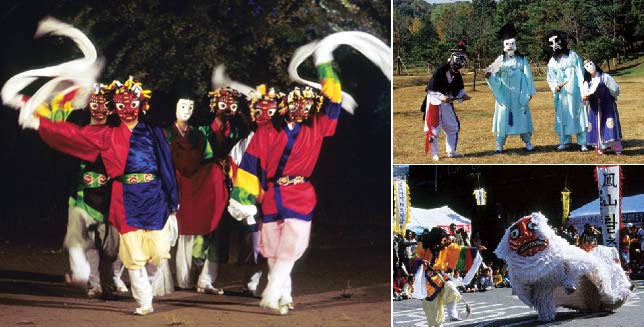
(Left) The Dance of Nojang from the Bongsan mask dance. Somu rides in a sedan chair; (right, above) The noble brothers and Malddugi from the Bongsan mask dance; (right, bottom) The lion dance from the Bongsan mask dance: the dance of Mabu and the white lion.
Although the Eunyul and Bongsan mask dances were all created in Hwanghae Provice, their contents, structure of chapters and characters vary.
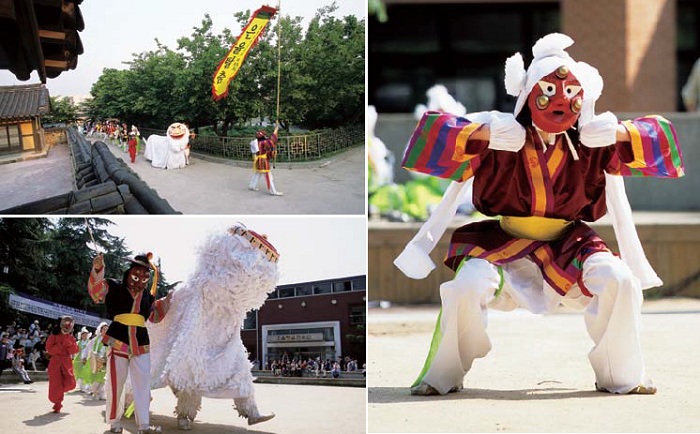
(Left, above) A street parade is part of the Eunyul mask dance; (Left, bottom) The lion dance from the Eunyul mask dance; (right) The monk dance from the Eunyul mask dance.
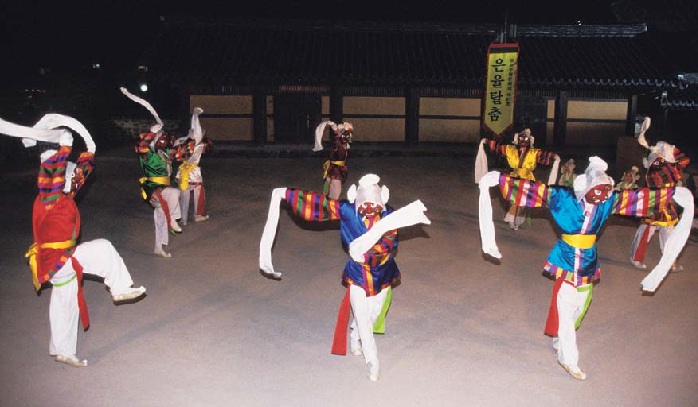
The eight monks dance together to the taryeong rhythm as part of the Eunyul mask dance.
The Gangnyeong mask dance is quite different from the Bongsan variant in several ways. First, it consists of eight scenes. Second, the motions of its dances are elegant and smooth. Third, the costumes are simple. Lastly, it is a folk performance focusing on religious values while the Bongsan dance is mainly for amusement.
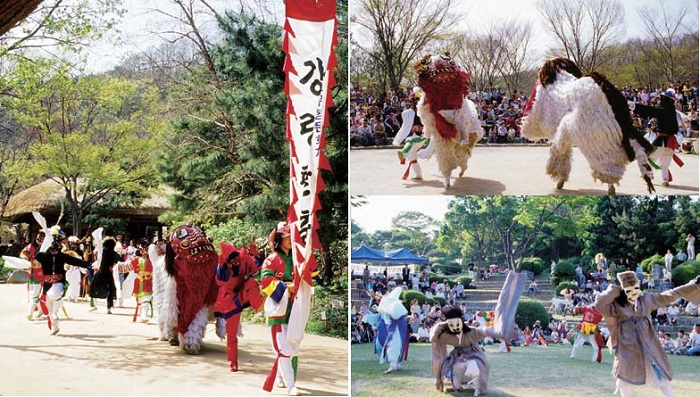
(Left) Performers participate in a street parade preceding the Gangnyeong mask dance; (right, above) The lions’ dance from the Gangnyeong mask dance; (right, bottom) The noblemen’s dance from the Gangnyeong mask dance.
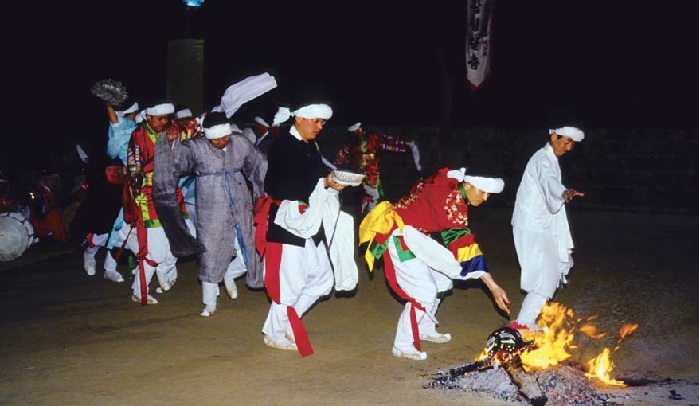
Dancers burn their masks after a performance.
People in Hwanghae Province believed that mask dance performances could banish misfortune from their villages and bring about a good harvest. To this end, mask dance performances began with ritual dances of exorcism, such as the four young monks’ dance in honor of the four directional gods and the lion dance, and ended in mask-burning ceremonies.
A total of 26 masks are used in the Bongsan mask dance. The Gangnyeong mask dance presents 19 masks, including two horsemen, two servants, two monks, an old man and a drunkard.
The Monkey Mask
The monkey serves as the shoe seller’s errand boy in the Bongsan mask dance, while in the Gangnyeong mask dance he amuses the audience with his tricks.
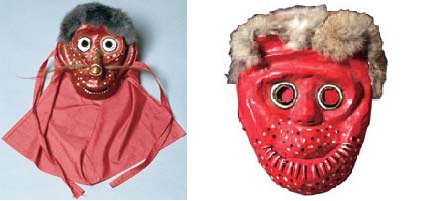
(Left) The monkey from the Gangnyeong mask dance; (right) The monkey from the Bongsan mask dance.
The Shoe Peddler Mask
Sinjangsu is an itinerant shoe peddler. The old monk, seduced by the little shaman, buys a pair of shoes on credit, and the shoe seller sends the monkey to the monk in order to collect the money owed for the shoes.
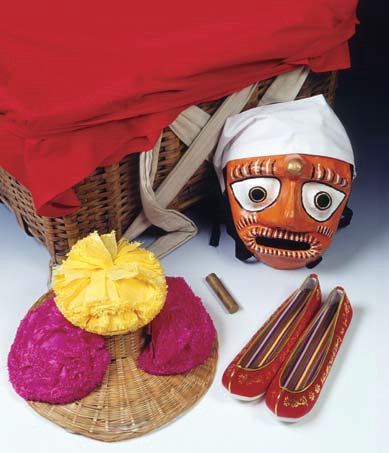
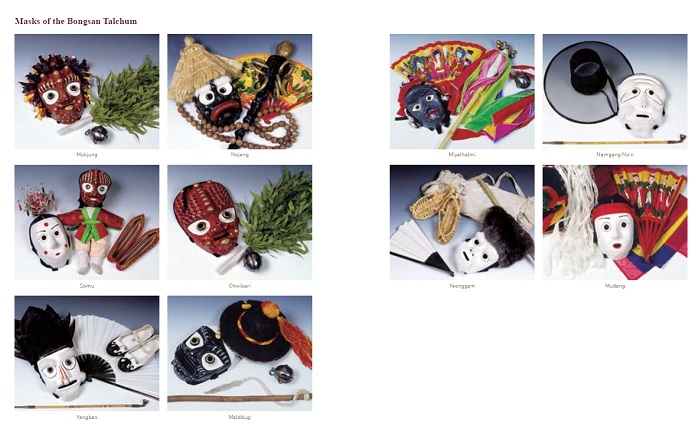
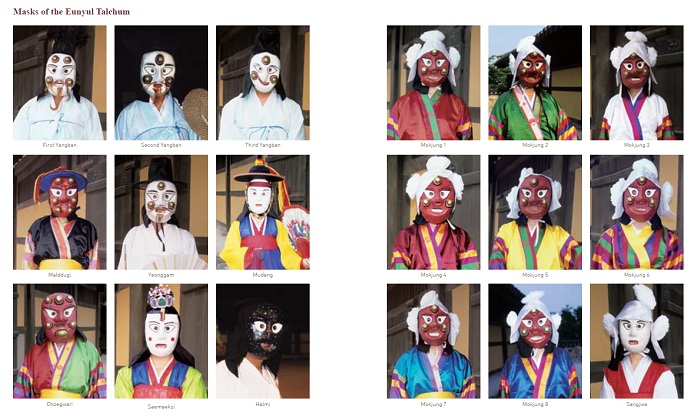
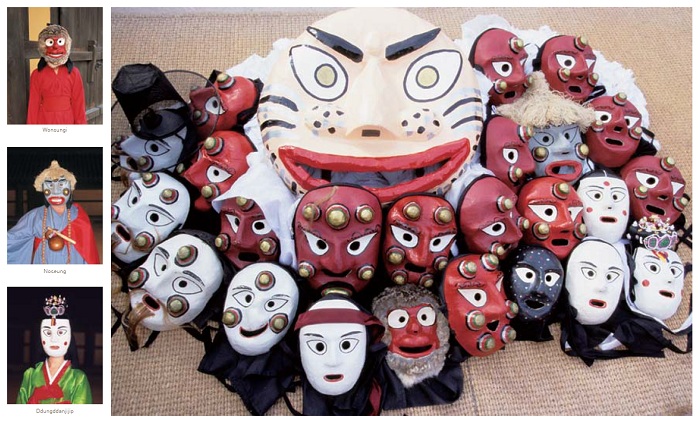
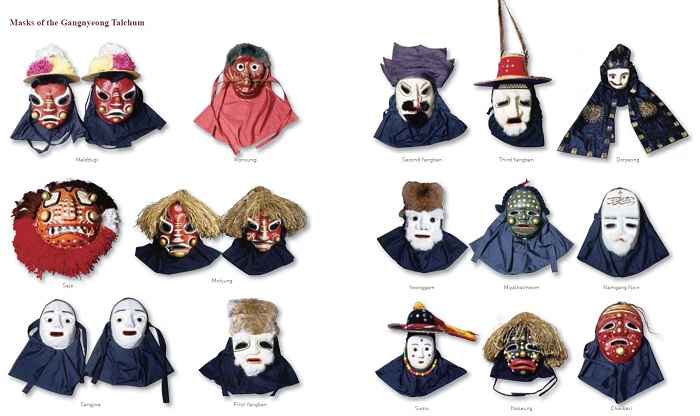
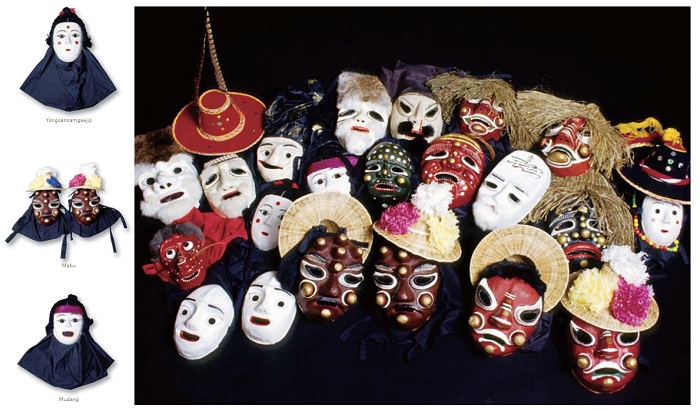
* This series of article has been made possible through the cooperation of the National Research Institute of Cultural Heritage. (Source: Intangible Cultural Heritage of Korea)
